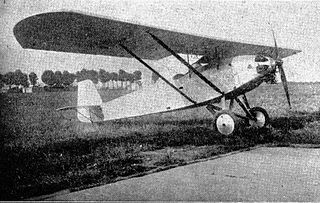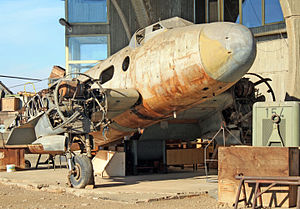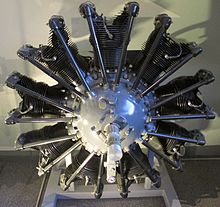
The Fairchild AT-21 was an American World War II specialized bomber crew trainer, intended to train crews in the use of power gun turrets or a gun on a flexible mount, as well as learn to function as a member of a crew. It had a brief career as a training aircraft before modified bombers took over this role.

The Ikarus ŠM, ŠM was the first design of Eng. Josip Mikl for the Yugoslav company Ikarus, it was a side-by-side two-seat biplane flying boat powered by a 100 hp (75 kW) Mercedes engine. The aircraft used for training by the Yugoslav Royal Navy.
The Ikarus IO was a biplane flying boat produced in Yugoslavia in the late 1920s. It was a conventional flying boat design for its day, featuring a large single-bay wing cellule, the staggered wings of slightly uneven span braced with N-struts. The pilot and observer sat side by side in an open cockpit, and a gunner sat in an open position ahead of them, in the bow. The pusher engine and frontal radiator were carried on struts in the inter-plane gap.
The Zmaj R-1 was a twin-engined prototype bomber produced by Zmaj aircraft of the former Yugoslavia, designed in the 1930s. The aircraft remained a prototype due to a number of difficulties in testing.

The Fizir F1V was the basis from which engineer Rudolf Fizir developed a series of single-engined, two-seat, reconnaissance biplanes fitted with different engines. Construction was carried out in the Yugoslav aircraft factories Zmaj and Rogožarski between 1928 and 1932.

The Rogožarski SIM-XIV-H was a 1930s Yugoslav coastal reconnaissance floatplane and light bomber, twin-engined, with three crew members. It was designed and built at the Rogožarski factory in Belgrade.

The Rogožarski SIM-X was a Yugoslav single-engine sports and tourist plane also used for basic training of military pilots designed in 1936, with two crew members. It was designed and built at the Rogožarski factory in Belgrade.

The Rogožarski SIM-XI was a single-seat, single-engine trainer monoplane built in the Kingdom of Yugoslavia in 1938. It was designed and built at the Rogožarski factory in Belgrade.
The SIM-VIII was a 1931 Yugoslav, single-engined, 2-seat, sport, tourist and training aircraft, designed by Sima Milutinović and built at the Rogožarski factory in Belgrade from 1931 and by Ikarus at Zemun from 1933.

The Rogozarski R-313 was a two-seat twin-engined monoplane designed as a fighter/light bomber/reconnaissance aircraft in Yugoslavia before World War II. It was designed and built at the Rogozarski factory in Belgrade.

The Zmaj Fizir FN was a plane designed for primary (initial) training of pilots in Yugoslavia before World War II. It was constructed in Zmaj, a Zemun-based factory, in the Rogožarski factory in Belgrade, and Albatros in Sremska Mitrovica.

The Rogožarski SIM-VI was a single-engined, two-seat, low wing aircraft designed as trainer in Yugoslav before World War II. It was designed and built at the Rogožarski factory in Belgrade.

The SIM-II was a 1930s Yugoslav Sports and tourist plane and the plane for the basic training, one-engined, with two crew members. It was designed by Sima Milutinović and built at the "S.Vlajković i sinovi" factory in Belgrade.
The Ikarus 215 twin-engine plane, was a Yugoslav light bomber and a training aircraft of mixed construction, the prototype flew in 1949. It did not go into production. The prototype was used for training and as a liaison. It was designed and built at the Ikarus factory in Zemun-Belgrade.

The Ikarus MM-2 was a 1940 prototype single engine low-wing monoplane advanced training aircraft featuring mixed construction and retractable undercarriage produced at the Yugoslavian Ikarus factory.
Sima Milutinović, was a Yugoslav mechanical engineer and a professor at the Faculty of Mechanical Engineering, at the University of Belgrade, the most prolific Yugoslav aircraft constructor.
Dušan Stankov/(Serbian Cyrillic: Душан Станков), was an engineer and professor at the University of Belgrade's Faculty of the Mechanical Engineering, a Yugoslav aircraft constructor, who contributed greatly to developing the studies at the faculty and the Faculty itself as well as to the development of the Yugoslav Air Force in general.
The Ikarus Orkan was a three-seat twin-engined monoplane designed as a light bomber/reconnaissance aircraft in the Kingdom of Yugoslavia before World War II. It was designed and built at the Ikarus factory in Zemun-Belgrade.
The TNCA MTW-1 was a high-wing monoplane built by the TNCA.
The Ikarus 231 was a courier aircraft built in Yugoslavia by Ikarus Aircraft during the late 1940s.













